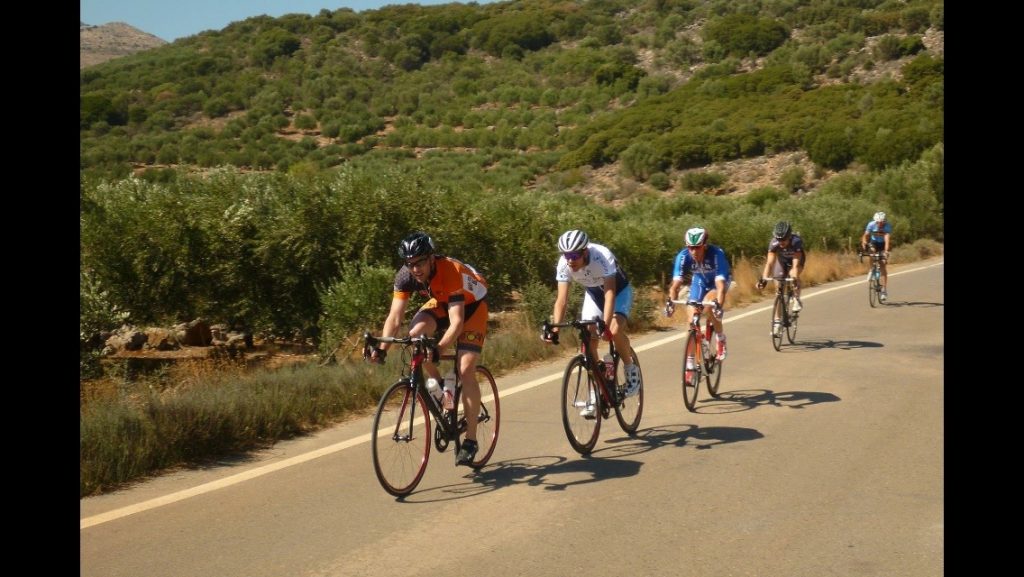5 Most common Bike Fitting Myths
Bike Fitting has become increasingly common and the information online is pretty endless. So here is a short post on the 5 most common bike fitting mistakes and how to avoid them.
01
Higher Seat Height Allows you to Produce More Power
There is a common thought that unless your saddle is way up as high as it can be you are missing out on power and not maximising muscular performance. This is totally wrong!! The correct height is the best height…which for most people I see is lower than they think.
A large majority of people have their seats too high and as a result, are extremely unstable on the bike while they are pedalling. This tends to get worse as intensity and fatigue increase!!
There are plenty of formulas that have been tested to prescribe seat height. However, none are perfect. The best way I have found was from listening to and reading the work of Steve Hogg. It’s all about stability. As you get closer to the correct seat height the pelvis will be more stable and the rider no longer loses control of their knee during the pedal stroke…see Steve Hogg’s blog if you want to know more, he explains it far better than I ever could.
The problem with the formulas is that they can’t take everything into account. There are too many variables from different length feet, tibias and femurs to different pedalling styles and injury history. Observation from an experienced bike fitter is the best way and if in doubt, a little too low causes far fewer problems than a little too high!!
02
Taller Riders Need Longer Cranks
There are lots of myths around cranks. Longer cranks give you better leverage to produce torque, power, etc…it’s just not true. Even the fact that tall riders need long cranks isn’t necessarily true.
Cranks have commonly been linked to anthropometric measures and there is some benefit to. that for some. However, as is common, those on the ends of the bell curve lose out. Both shorter and taller riders will end up with cranks that are too long with the common calculators used.
Most of the common measures are unable to take into account variations such as shoe size, tibia/femur length, riding style, riding goals, injury history, etc that all have a bearing on the lengths of cranks you choose.
Generally speaking shorter cranks will be more forgiving and with no disadvantage at all!! There is no evidence that cycling performance changes with shorter/longer cranks. In fact, there are advantages to shorter cranks in terms of achieving more aero position, opening up the hip angle, etc.
03
Lowering Seat Height Increases Pressure on your Knees
This one has been around a long time, there were some studies years ago that suggested increased patellofemoral loading when the seat was lower. However, more recent studies have suggested this may not be the case.
In my opinion, the correct seat height for the individual is always what you are aiming for. In conjunction with other bike fit changes such as crank length, cleat position, saddle fore/aft, etc you can find the right combination to alleviate knee pain.
Raising the seat height to help knee pain is a massive oversimplification of a complex problem! You need to go way beyond this to solve one of the most common injuries affecting cyclists. This most likely means both bike changes and work off the bike to improve movement, strength and flexibility.
04
Pedal Axle Should be Under the Ball of the Foot
This is a bit contentious as people will align the cleat in different ways. A lot of modern/racing type shoes have the holes for the cleat a long way forward. Meaning even when the cleats are fitted as far back as they go, they are still forward of what you want.
If you fit with the cleat with the pedal axle under the ball of the foot while static or under low load cycling you will end up with the axle too far forward once you start pushing harder on the pedals. Pedal kinematics change with increased load and with increased fatigue resulting in the heel gradually dropping lower, effectively moving the pedal axle forward.
I would suggest you have the pedal axle slightly behind the ball of the foot. It is no disadvantage to being there and avoiding potential problems with long and hard rides.
05
Once I do a Bike Fitting, I’m Sorted!
Bike fitting is a process. A good bike fit will take a good few hours and will (if it’s a good fitter) make some great gains towards a good fit on your bike. However, this is by no means the end of the process. I would suggest it is just the start. I’m always happy to do a few mini-fits/updates in the weeks and months after to refine things.
Also, if there was pain/injury involved, it’s likely there were plenty of off-bike things to work on. As a result, when the off-bike improvements are made, the bike will need to be adjusted accordingly.
Even once you have an ideal fit…over time this will change. Your body will change postures, joint ranges, strengths, etc or may be due to injury, things will change. As a result, the perfect fit you had before will need adjusting. It’s always worth having a check-up, save discomfort in the long run.
Hit a Plateau?
We can look into your training history, identify the reasons for your plateau and build a plan to get to the next level.
Money-Back Guarantee
We only work on the understanding that you can have your money back if you are not satisfied.

